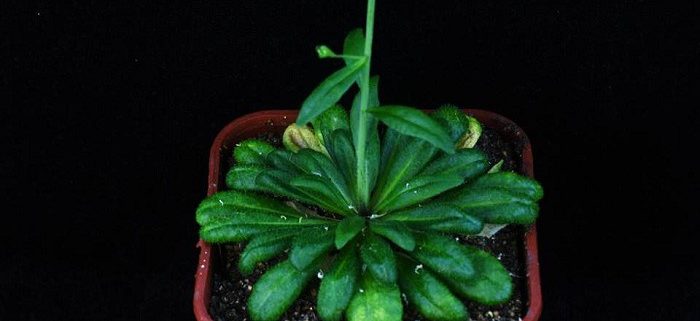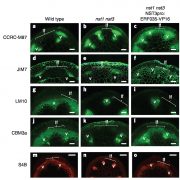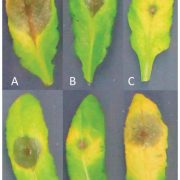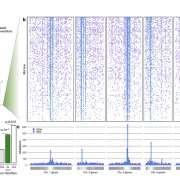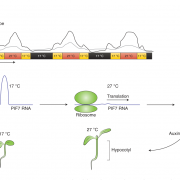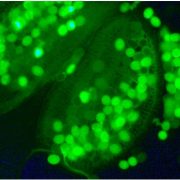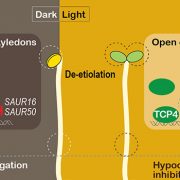Branch Formation (or Not) in the Leaf Axil
Li et al. report a regulatory module that controls the initiation of axillary meristems, thereby determining plant branching. Plant Cell https://doi.org/10.1105/tpc.20.00012
By Yu Li and Yunhai Li
State Key Laboratory of Plant Cell and Chromosome Engineering, CAS Centre for Excellence in Molecular Plant Science, Institute of Genetics and Developmental Biology, The Innovative Academy of Seed Design, Chinese Academy of Sciences, Beijing 100101, P.R. China.
Background: The diversity of higher plant forms is determined by the number, position, and shape of lateral organs in the aerial parts of plants. Branches are important lateral organs, which affect plant architecture and plant yield. Branches originate from secondary meristems in the axils of leaves, referred to as the axillary meristems. The axillary meristems can develop into axillary buds and then form branches. However, in some conditions, the axillary meristems develop into axillary buds and stay in dormancy. The axillary bud can also develop into a complete branch depending on environmental and developmental cues. Therefore, the development of a branch can be divided into two main steps: the initiation of axillary meristems and the outgrowth of axillary buds.
Question: Several genes affect axillary meristem initiation in Arabidopsis, but the mechanisms of axillary meristem initiation are still largely unknown. Here, we uncover a new regulatory module CUC2/CUC23-DA1-UBP15 that controls the initiation of axillary meristems, thereby determining plant architecture.
Findings: Mutation in the ubiquitin-dependent peptidase DA1 causes fewer lateral branches due to defects in the initiation of axillary meristems. The transcription factors CUC2 and CUC3, which regulate the initiation of the axillary meristems, directly bind to the promoter of DA1 and activate its expression. Further results show that the ubiquitin specific protease UBP15, which is a direct substrate of DA1 peptidase, represses the initiation of axillary meristems. Genetic analyses support that CUC2/CUC33, DA1 and UBP15 function in a common pathway to control the initiation of axillary meristems. Therefore, our findings reveal a genetic and molecular framework in which the CUC2/CUC3-DA1-UBP15 regulatory module controls the initiation of axillary meristems, thereby determining plant architecture.
Next steps: It is important to investigate which environmental cues and endogenous signals regulate the CUC2/CUC3-DA1-UBP15 pathway. It is also essential to identify the targets of UBP15 in the axillary meristem initiation. Considering that DA1 and UBP15 and their homologs in crops influence seed yield, it will be worthwhile to investigate whether homologs of CUC2/CUC3, DA1 and UBP15 in crops could be used to improve plant architecture in key crops.
Yu Li, Tian Xia, Fan Gao and Yunhai Li. (2020). Control of Plant Branching by the CUC2/CUC3-DA1-UBP15 Regulatory Module. Plant Cell. https://doi.org/10.1105/tpc.20.00012.


